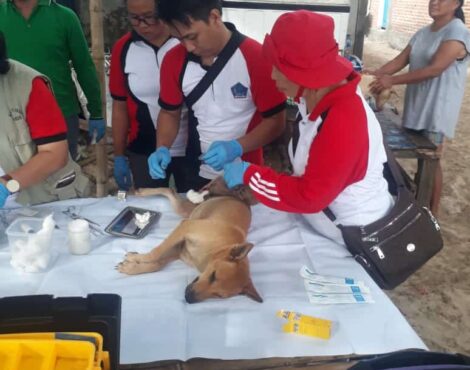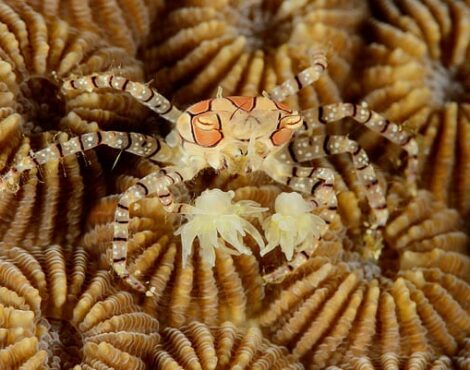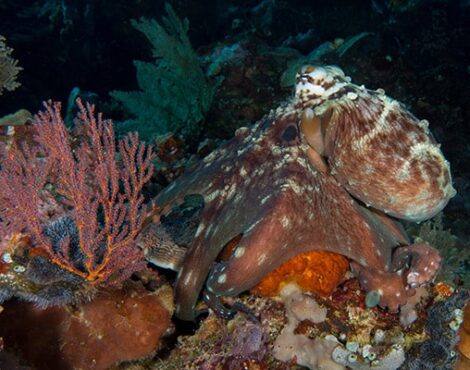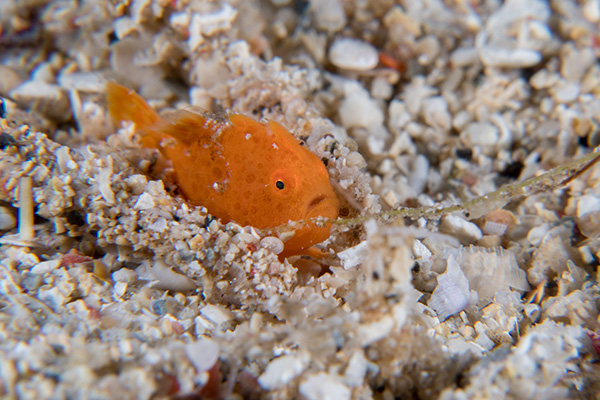
Recently, we have had an influx of one of our most popular underwater critters â frogfish.
These bizarre blob like fish are always a hit among guests, and while they may not be the most attractive fish that can be found around Siladen, with their amazing camouflage, poor swimming ability, and amazing hunting tactics, they are defiantly one of the most interesting.
What are Frogfish?
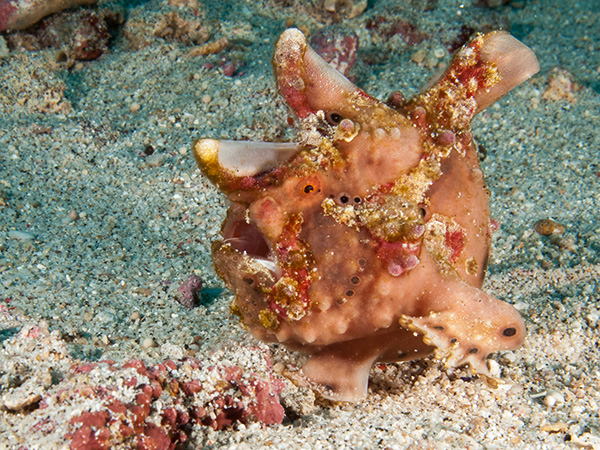
Frogfish are any member of the family Antennariddae, from the order Lophiiformes, or more commonly known as anglerfish.
There are currently 47 known species of frogfish found throughout the world and they can be found in all tropical and subtropical seas and oceans in the world â with the exception of the Mediterranean Sea.
What do Frogfish Look Like?
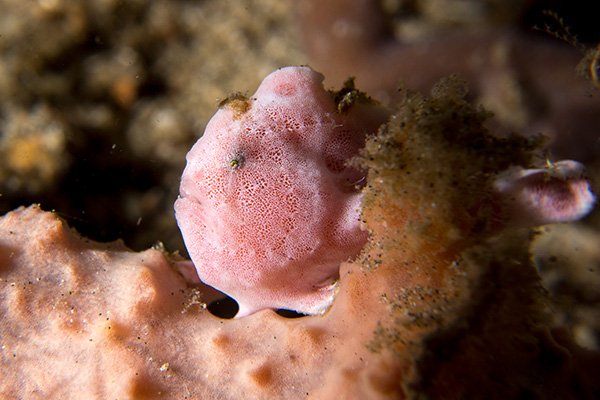
Although finding them can be difficult because of their amazing camouflage, frogfish are instantly recognisable once you spot them.
They are generally quite small â usually between 2cm to 15cm â although the largest species, the Giant Frogfish, can be larger than 30cm. They have a very stocky body with a large bulbous head, and their bodies are often covered in appendages to aid their camouflage.
Colour is not really a good identifier with frogfish as many species can change their colour or skin texture over time to match their habitat â which is usually a sponge. They also sometimes cover themselves with algae or hydrozoa to help further conceal their identity. Even two members of the same species can appear vastly different from one another.
As members of the anglerfish family, all frogfish have a fleshy appendage sticking out of the top of their headâ commonly known as a lure â which they use to attract their prey.
What do Frogfish Eat?
Frogfish are voracious predators. They will eat anything that is not too big, including other members of the same species, although their typical prey is crustaceans and other small fish.
Despite being a relatively slow and cumbersome fish, frogfish have one of the fastest attack strikes in the animal kingdom. Using their superb camouflage, they will hide among sponges or coral and wait for any potential prey to come towards them.
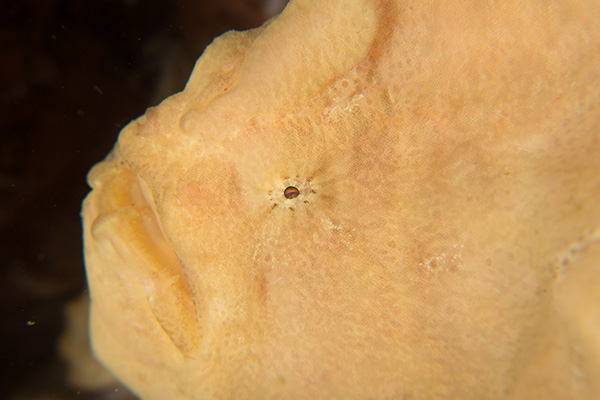
Once the prey has been spotted, the frogfish will follow it with its eyes, and when it gets within roughly seven body lengths of the frogfish, it will begin moving its lure in a way that mimics another animal such as a small fish or shrimp. If the prey takes the bait, the frogfish will begin waving the lure close to its mouth and when the prey is close enough the frogfish will initiate its attack.
The catch is made by the frogfish suddenly opening its mouth cavity up to twelve times its normal size, which in turn creates a vacuum that sucks in the defenceless prey and all the surrounding water. The water then flows out of the gills, while the prey is swallowed whole. This attack strike takes just six milliseconds, so there is very little chance you will see anything except a sudden movement.
It is not just the mouth of the frogfish that can expand either. Frogfish can also expand their stomachs, allowing them to swallow whole prey that are up to twice their size. They have been known to try and eat even larger prey than that, however in these situations they must release the prey so their donât harm or kill themselves.
Where can I Dive with Frogfish?
Luckily the Indo-Pacific has the highest number of frogfish species on Earth, and we can see many of them in Bunaken Marine Park. Different species prefer different habitats, so you will need to visit a variety of dive sites in order to tick them all off your checklist.
The most common sightings on the walls are the giant frogfish â which are instantly recognisable as they are much larger than the other frogfish species. Another fairly common species is the painted frogfish, which we sometimes spot on the walls, however we see them far more frequently â especially the juveniles â on the black sand slopes of North Sulawesi.
Warty frogfish tend to prefer sheltered rocky reefs, so we have the best chance of finding them at one of the mainland sites that combine both reef and sand, such as Tiwoho or Bolung. The extremely beautiful and cryptic hairy frogfish is usually spotted sitting among algae beds on open black sand, so the best place to find them is at one of our true black sand muck diving spots. The hairy frogfish is one of least commonly spotted frogfish around Siladen, so you are very lucky if you see one.
If you are interested in diving with frogfish, the best person to speak to is your dive guide. Frogfish tend to stay in one area for a long time, so the guides will know best where to find them. Although they stay in the same area for an extended period, they will move if the frogfish gets stressed or water conditions become unfavourable, so we can never guarantee sightings â even if we know there are many around during your stay.
Photographing Frogfish
If you are a photographer, it is important to be cautious with using your flash or strobes. The frogfish will not move, even after repeated strobe flashes, however over exposing them to bright lights could damage their eyesight.
As with all other animals, the best practise is to get everything ready for your shot before taking any pictures of the frogfish, and when you are happy with the settings, move in and take a maximum of five shots per individual. As frogfish stay extremely still, five should be plenty to get a picture you are happy with.


